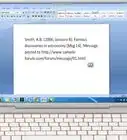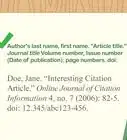This article was co-authored by wikiHow staff writer, Jennifer Mueller, JD. Jennifer Mueller is a wikiHow Content Creator. She specializes in reviewing, fact-checking, and evaluating wikiHow's content to ensure thoroughness and accuracy. Jennifer holds a JD from Indiana University Maurer School of Law in 2006.
This article has been viewed 239,680 times.
Learn more...
When conducting research for a paper or other project, you may use articles you found online as sources. Include a full citation for the online article in the bibliography or Works Cited at the end of your paper. When you paraphrase or quote information from the online article in your paper, use an in-text citation that points to that full citation. While the citation includes essentially the same information, the format will differ depending on whether you're using the Modern Language Association (MLA), American Psychological Association (APA), or Chicago citation style.
Steps
Sample Citations
MLA
-
1Start your full citation with the name of the author. If the article has an identified author, provide their last name followed by a comma, then their first name. Place a period after the author's name. If no author is identified, start your citation with the title.[1]
- Example: Bernstein, Mark.
-
2Provide the title of the article in quotation marks. Type the name of the article using title-case. Capitalize nouns, pronouns, verbs, and adverbs in the title. Place a period at the end of the title, inside the closing quotation marks.[2]
- Example: Bernstein, Mark. "10 Tips on Writing the Living Web."
Advertisement -
3List the name of the website where the article appears. The name of the website follows the title of the article. Use title-case, capitalizing nouns, pronouns, verbs, and adverbs. Put the name of the website in italics. Place a comma after the name of the website.[3]
- Example: Bernstein, Mark. "10 Tips on Writing the Living Web." A List Apart: For People Who Make Websites,
-
4Include publication information for the article and the website. Following the name of the website, list the name of the publisher or sponsoring organization if it is not included in the name of the website. Place a comma, then type the date the article was published in day-month-year format. Place a comma after the date.[4]
- Example: Bernstein, Mark. "10 Tips on Writing the Living Web." A List Apart: For People Who Make Websites, 16 Aug. 2002,
Leave out any information that isn't provided on the website. You don't have to include any abbreviations to indicate that information is not available. For example, if there is no date on the article, simply leave that information out. You don't have to include an abbreviation such as "n.d." for "no date."
-
5Copy the direct URL (or permalink) for the article. Use the full URL, without the "https://." If the article was found in a database and has a digital object identifier (DOI), use that instead of the URL. Place a period at the end of the URL.[5]
- Example: Bernstein, Mark. "10 Tips on Writing the Living Web." A List Apart: For People Who Make Websites, 16 Aug. 2002, alistapart.com/article/writeliving.
-
6Close your full citation with the date you accessed the article. Even though an access date isn't specifically required with MLA format, this information is recommended. Websites can be updated, and the information in the article or the location of the article on the website may change. Type the word "Accessed," then provide the date in day-month-year format.[6]
- Example: Bernstein, Mark. "10 Tips on Writing the Living Web." A List Apart: For People Who Make Websites, 16 Aug. 2002, alistapart.com/article/writeliving. Accessed 4 May 2009.
-
7Use the first item in your full citation for in-text citations. A basic MLA in-text citation includes the author's last name and the page on which the information quoted or paraphrased appears, enclosed in parentheses. If the article doesn't have page numbers, simply use the author's last name.[7]
- Example: (Bernstein).
If there was no author, use the title of the article in your parenthetical citation.
APA
-
1Start your full citation with the author of the article. An APA citation lists the last name of the author, followed by a comma, then the author's first initial. For some online articles, the author may be the group or agency that publishes the website, rather than a specific individual. Place a period after the name of the author.[8]
- Example: American Nurses Association. [9]
If no author is listed for the article, start your full citation with the title of the article. There's no need to note that no author was listed.
-
2Include the date of publication in parentheses. If the article lists a specific date it was published, type the year in parentheses after the name of the author. If more than one date is listed, use the most recent date on which the content of the article was changed or updated. Place a period after the closing parentheses mark.[10]
- Example: American Nurses Association. (2015).
-
3Provide the title of the article in italics. Type a space after the period following the year of publication, then type the title of the article in sentence-case. Capitalize only the first word and any proper nouns. If the article has a subtitle, place a colon after the title and then type the subtitle, also in sentence-case. Include the document type, if available, in square brackets after the title. Place a period at the end.[11]
- Example: American Nurses Association. (2015). Academic progression to meet the needs of the registered nurse, the health care consumer, and the U.S. health care system [Position statement].
If the article has no author, the title of the article appears in your citation before the date. There is no need to repeat it again.
-
4Close with a direct URL (or permalink) where the article appears. Use the phrase "Retrieved from," and then include the full URL for the article. In APA style, URLs are not followed by a period. This is the end of your full citation.[12]
- Example: American Nurses Association. (2015). Academic progression to meet the needs of the registered nurse, the health care consumer, and the U.S. health care system [Position statement]. http://nursingworld.org/MainMenuCategories/Policy-Advocacy/Positions-and-Resolutions/ANAPositionStatements/Position-Statements-Alphabetically/Academic-Progression-to-Meet-Needs-of-RN.html
-
5Use the author's last name and date of publication for in-text citations. After you paraphrase or quote information from the source in your paper, provide the last name of the author and the year the article was published in parentheses. Separate these elements with a comma.[13]
- Example: (American Nurses Association, 2015).
- If you have multiple articles with the same author and year of publication, place a lower-case letter after the year to distinguish them in your in-text citations. Make sure the same lower-case letter is reflected in your reference list.
If you're quoting the source directly, place a comma after the year, then provide the page number where the quoted information appears after the abbreviation "p." Use the abbreviation "n.p." if the article doesn't have page numbers.
Chicago
-
1Begin your citation with the author's name. If the article has an individual author, type their last name first, followed by a comma, then their first name. Some online articles have a group or organizational author. Type this name exactly as it appears on the website. Place a period after the author's name.[14]
- Individual author example: Nunley, Kathie.
- Organizational author example: United Nations Platform for Action Committee.
If the article has no author, skip this part of the citation. Instead, start the citation with the title of the article.
-
2Provide the title of the article in quotation marks. Following the name of the author, type the title of the article using title-case. Capitalize nouns, pronouns, verbs, and adverbs. Place a period at the end of the title, inside the closing quotation marks.[15]
- Individual author example: Nunley, Kathie. "The Caffeine Craze."
- Organizational author example: United Nations Platform for Action Committee. "Globalization and Clothes."
-
3Include the name of the website or publisher in italics. After the name of the article, provide the name of the website or the organization that publishes the website. Use title-case, capitalizing all nouns, pronouns, verbs, and adverbs. Place a period at the end of the name.[16]
- Individual author example: Nunley, Kathie. "The Caffeine Craze." Layered Curriculum.
- Organizational author example: United Nations Platform for Action Committee. "Globalization and Clothes." Women and the Economy.
-
4Note the date you accessed the article, or the date it was published. If there is a date of publication for the article, use the most recent date listed. If the article was modified, include the phrase "last modified" before the date. If there is no publication date, use the date you accessed the article after the word "accessed." Use month-day-year format for the date, and place a period at the end.[17]
- Individual author example: Nunley, Kathie. "The Caffeine Craze." Layered Curriculum. Accessed July 28, 2018.
- Organizational author example: United Nations Platform for Action Committee. "Globalization and Clothes." Women and the Economy. Last modified March 2011.
-
5Copy the full URL of the article. Close your citation with a full direct URL or permalink for the article. If there is no direct URL, use the URL of the home page of the website. Place a period at the end of the URL to end your citation.[18]
- Individual author example: Nunley, Kathie. "The Caffeine Craze." Layered Curriculum. Accessed July 28, 2018. http://help4teachers.com/caffeine.htm.
- Organizational author example: United Nations Platform for Action Committee. "Globalization and Clothes." Women and the Economy. Last modified March 2011. http://unpac.ca/economy/g_clothes.html.
-
6Alter the punctuation for footnotes in text. In Chicago-style footnotes, include the same information you included in your bibliography. There are some differences from the bibliography entry, however. Parts of the citation are separated with commas in footnotes, instead of periods. The names of individual authors are listed in first name-last name format.[19]
- Individual author example: Kathie Nunley, "The Caffeine Craze," Layered Curriculum, accessed July 28, 2018, http://help4teachers.com/caffeine.htm.
- Organizational author example: United Nations Platform for Action Committee, "Globalization and Clothes," Women and the Economy, last modified March 2011, http://unpac.ca/economy/g_clothes.html.
Community Q&A
-
QuestionWhat if there is no author on the article?
 Community AnswerIn that case, you will omit the author space. Just begin the citation with the title of the article.
Community AnswerIn that case, you will omit the author space. Just begin the citation with the title of the article.
References
- ↑ https://owl.purdue.edu/owl/research_and_citation/mla_style/mla_formatting_and_style_guide/mla_works_cited_electronic_sources.html
- ↑ https://owl.purdue.edu/owl/research_and_citation/mla_style/mla_formatting_and_style_guide/mla_works_cited_electronic_sources.html
- ↑ https://owl.purdue.edu/owl/research_and_citation/mla_style/mla_formatting_and_style_guide/mla_works_cited_electronic_sources.html
- ↑ https://owl.purdue.edu/owl/research_and_citation/mla_style/mla_formatting_and_style_guide/mla_works_cited_electronic_sources.html
- ↑ https://owl.purdue.edu/owl/research_and_citation/mla_style/mla_formatting_and_style_guide/mla_works_cited_electronic_sources.html
- ↑ https://owl.purdue.edu/owl/research_and_citation/mla_style/mla_formatting_and_style_guide/mla_works_cited_electronic_sources.html
- ↑ https://owl.purdue.edu/owl/research_and_citation/mla_style/mla_formatting_and_style_guide/mla_in_text_citations_the_basics.html
- ↑ http://blog.apastyle.org/apastyle/2016/11/writing-website-in-text-citations-and-references.html
- ↑ http://www.apastyle.org/learn/faqs/web-page-no-author.aspx
- ↑ http://blog.apastyle.org/apastyle/2016/11/writing-website-in-text-citations-and-references.html
- ↑ http://blog.apastyle.org/apastyle/2016/11/writing-website-in-text-citations-and-references.html
- ↑ http://www.apastyle.org/learn/faqs/web-page-no-author.aspx
- ↑ http://blog.apastyle.org/apastyle/2016/11/writing-website-in-text-citations-and-references.html
- ↑ http://libanswers.snhu.edu/faq/48009
- ↑ http://libanswers.snhu.edu/faq/48009
- ↑ http://libanswers.snhu.edu/faq/48009
- ↑ http://libanswers.snhu.edu/faq/48009
- ↑ http://libanswers.snhu.edu/faq/48009
- ↑ http://libanswers.snhu.edu/faq/48009
About This Article
To cite an online article using APA style, start with the author's last name and first initial of their first name, followed by a period. Next, include the year of publication in parentheses and end with a period. Then, type out the full title in italics, end with a period, and follow that up with the publication name and volume number, if appropriate. Finally, close the citation with the direct URL. To learn how to cite an article using Chicago or MLA style, read on!
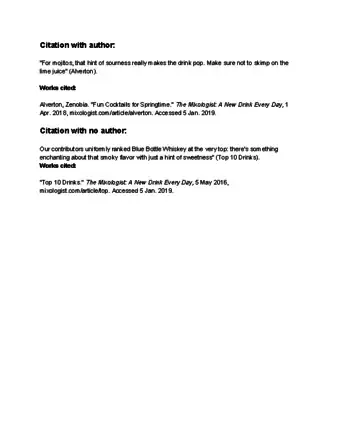
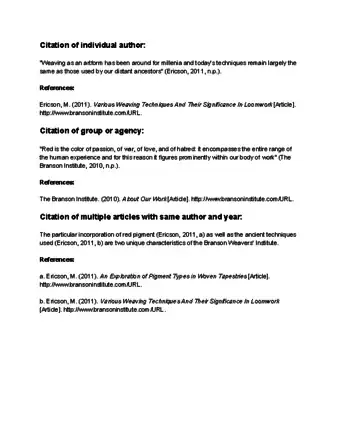
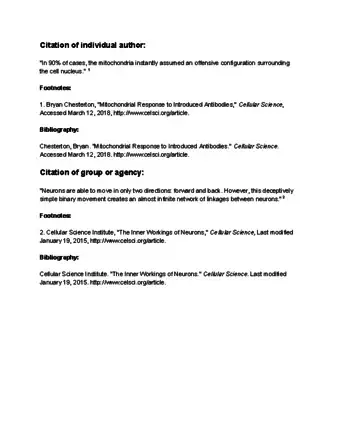
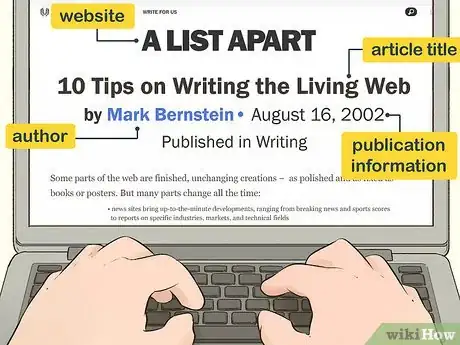
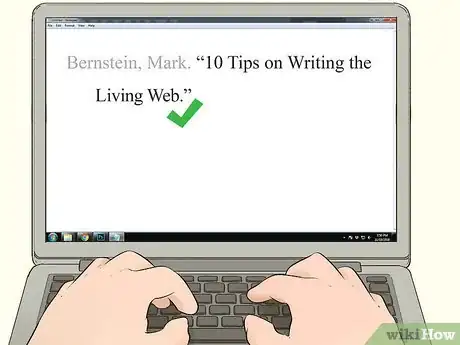
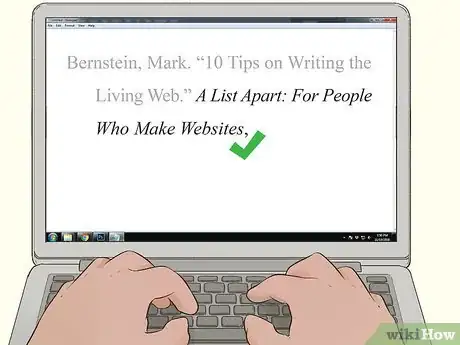

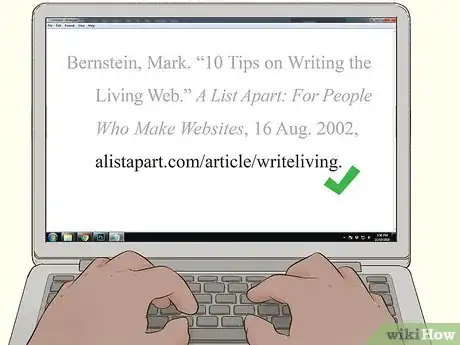

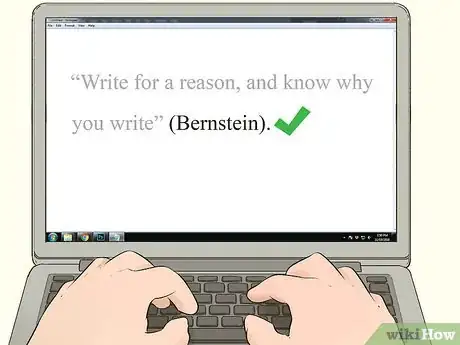
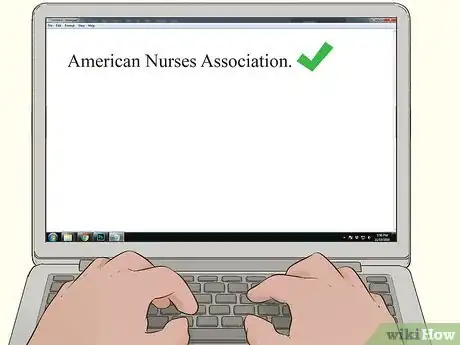
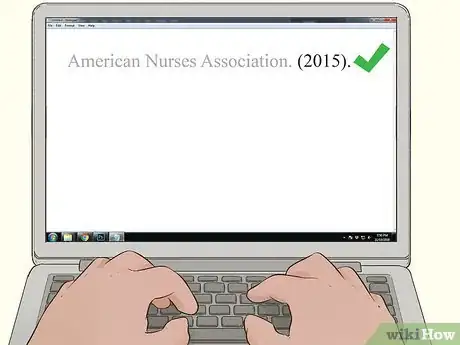
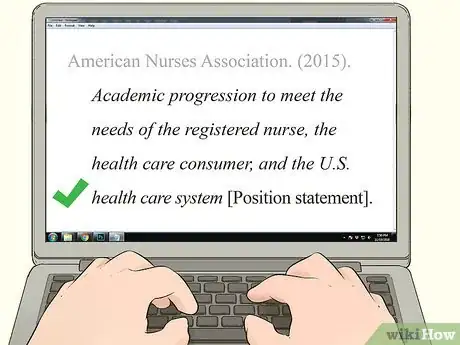
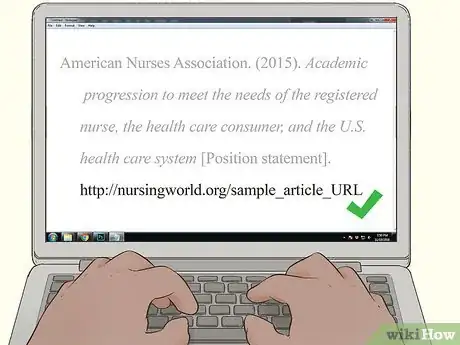
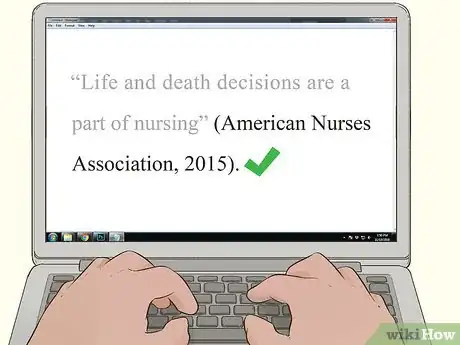
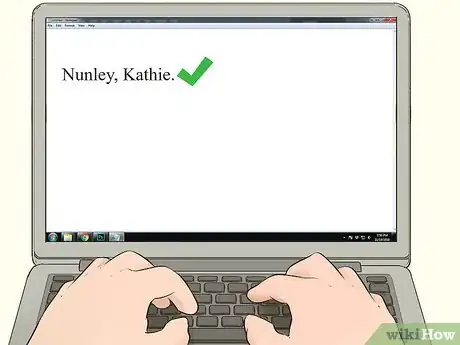


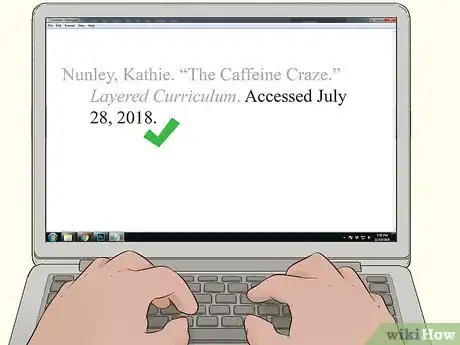




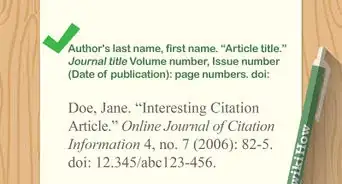
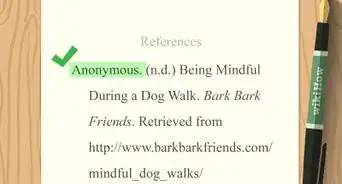





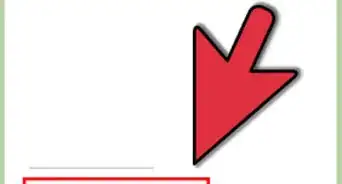


-Step-18.webp)










